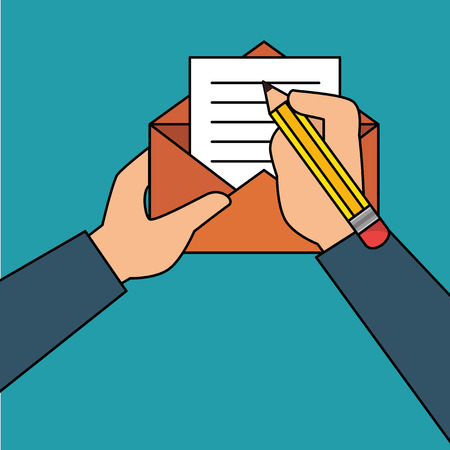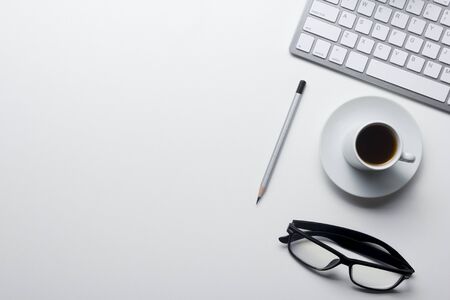Introduction: The Culture of Appreciation in American Workplaces
In the United States, showing gratitude and recognizing others’ contributions is a core part of workplace culture. Whether it’s a manager acknowledging a team’s hard work, a colleague expressing thanks for help on a project, or an employee appreciating a mentor’s guidance, appreciation helps build positive relationships and trust. These small gestures can boost morale, increase engagement, and even improve overall job satisfaction.
One traditional way Americans have shown appreciation is through thank-you notes. While digital communication is now the norm, sending a handwritten thank-you note by mail still holds special meaning for many professionals. It shows extra effort and sincerity, making the recipient feel truly valued. But as workplaces evolve and technology changes how we connect, some may wonder if this classic form of correspondence still matters.
Why Gratitude Matters at Work
| Benefit | Description |
|---|---|
| Builds Relationships | Thank-you notes help strengthen professional connections and trust among coworkers. |
| Boosts Morale | Employees who feel appreciated are often happier and more motivated. |
| Promotes Positive Culture | A culture of gratitude encourages teamwork and mutual respect. |
| Enhances Reputation | Taking time to send a thank-you note reflects professionalism and courtesy. |
The Tradition of Thank-You Notes
A thank-you note is more than just words on paper—it’s a personal gesture that can leave a lasting impression. In the American workplace, these notes are commonly sent after job interviews, meetings with new contacts, receiving help from colleagues, or celebrating achievements. Whether mailed or hand-delivered, they show genuine appreciation in a tangible way.
2. A Brief History of Thank-You Notes in America
Sending thank-you notes by mail is a time-honored tradition in the United States, especially in professional settings. This practice has roots that go back hundreds of years and has played an important role in American business etiquette. Understanding how this custom began and why it became so significant helps us see its ongoing influence in today’s workplace.
The Origins of Thank-You Notes
The concept of sending written thanks can be traced back to Europe, where handwritten letters were used to show respect and gratitude among the upper class. As Americans adopted these customs, thank-you notes became part of social and business life. In the 19th and early 20th centuries, people often wrote personal notes to express appreciation after receiving gifts, favors, or hospitality.
Thank-You Notes in American Business Etiquette
By the mid-1900s, thank-you notes had become an expected gesture in the American workplace. Sending a note after a job interview, business meeting, or major project was seen as a mark of professionalism and good manners. It showed that the sender valued the recipient’s time and effort.
Key Moments When Thank-You Notes Are Used in Business
| Occasion | Reason for Sending a Thank-You Note |
|---|---|
| After a Job Interview | To express appreciation for the opportunity and reinforce interest in the position |
| After Receiving Help or Mentorship | To acknowledge support and guidance from colleagues or supervisors |
| Following a Business Meeting or Deal | To build relationships and show gratitude for collaboration |
| At Employee Milestones (e.g., anniversaries) | To recognize loyalty and contributions to the company |
Cultural Significance in America
In American culture, taking the time to write and mail a physical thank-you note is seen as thoughtful and sincere. It goes beyond quick emails or text messages by showing genuine effort. Many believe that this small act can make a lasting impression—whether you’re applying for a job, building client relationships, or simply recognizing teamwork.

3. Digital Age: The Rise of Email and E-Cards
The Shift from Handwritten Notes to Digital Messages
With the rapid growth of technology, the American workplace has seen a big shift from traditional handwritten thank-you notes sent by mail to digital options like email and e-cards. Today, it is common for employees and employers to send quick thank-you emails after meetings, interviews, or teamwork. E-cards with fun graphics are also popular for birthdays or special achievements.
How Digital Communication Has Changed Thank-You Note Practices
Digital communication has made it much easier and faster to express gratitude. You can send an email or e-card instantly, no matter where you are. This convenience means that more people might remember to say “thank you” in some way. However, this change also affects the personal touch and effort that comes with a handwritten note.
Pros and Cons: Electronic vs. Handwritten Notes
| Electronic (Email/E-Card) | Handwritten (Mailed Note) | |
|---|---|---|
| Speed | Instant delivery; perfect for quick responses | Takes days to arrive; slower process |
| Convenience | Can be sent anytime, anywhere with internet access | Requires stationery, postage, and mailing time |
| Personal Touch | May feel less personal or thoughtful | Shows extra effort; feels more meaningful to many recipients |
| Sustainability | No paper waste; eco-friendly option | Uses paper and other materials; less eco-friendly |
| Formality & Impact | Good for everyday thanks; may be overlooked in crowded inboxes | Makes a strong impression for important occasions (job offers, major help) |
Cultural Expectations in the American Workplace
In the U.S., using digital thank-you notes is widely accepted for most work situations. Still, some managers or colleagues may appreciate a handwritten note for significant events—like after a job interview or when someone goes above and beyond. It can show thoughtfulness and stand out in today’s fast-paced digital world.
4. Perception and Impact: Do Handwritten Notes Still Matter?
In the modern American workplace, digital communication has taken center stage. But what do employers and colleagues really think when they receive a handwritten thank-you note in the mail? Let’s look at how these traditional gestures are perceived today and their impact on professional relationships.
Sincerity: A Rare and Memorable Gesture
Handwritten thank-you notes are often seen as more thoughtful and genuine compared to quick emails or instant messages. Because writing and mailing a note takes more effort, recipients usually view them as sincere expressions of gratitude. This extra step can help you stand out in a positive way, showing that you value your relationship enough to go beyond the standard digital response.
Impact on Workplace Relationships
Mailed thank-you notes can play a meaningful role in building stronger connections at work. Here’s how:
| Area of Impact | How Mailed Thank-You Notes Are Perceived |
|---|---|
| First Impressions (e.g., after interviews) | Seen as impressive and memorable; can tip the scales in your favor |
| Team Collaboration | Shows appreciation for support, fostering goodwill among colleagues |
| Manager-Employee Relations | Signals respect and recognition, strengthening trust and rapport |
| Networking | Makes connections feel valued, leading to lasting professional relationships |
The Current View: Traditional, but Not Outdated
While mailed thank-you notes might seem old-fashioned, many American professionals appreciate their personal touch. In some industries—especially those that emphasize relationship-building, like law, sales, or consulting—a handwritten note can still carry significant weight. Even in tech-savvy fields, receiving a tangible note in the mailbox often leaves a lasting impression.
What Employers Say
Some hiring managers report that mailed thank-you notes help candidates stand out during the recruitment process. Others mention that these notes show strong communication skills and attention to detail—qualities valued across all industries.
Key Takeaways from Colleagues and Supervisors
- Mailed notes are seen as thoughtful and respectful.
- They strengthen bonds between team members.
- They can make a difference during important moments like promotions or project completions.
- Younger workers may view them as novel or unique, while older generations often see them as classic professionalism.
Overall, while not everyone expects a mailed thank-you note today, those who receive one often remember it—and remember you—in a positive light.
5. When and How to Send Thank-You Notes by Mail
Occasions for Sending Mailed Thank-You Notes in U.S. Workplaces
While email is the go-to for quick messages, there are moments when a handwritten thank-you note by mail makes a lasting impression in American workplace culture. Here are situations when a mailed note is most fitting:
| Occasion | Why Mailed Note Is Appropriate |
|---|---|
| After a Job Interview (Especially Senior Roles) | Shows extra effort and genuine appreciation, making you stand out. |
| Receiving a Major Promotion or Award | Demonstrates gratitude and respect for the recognition. |
| When Someone Goes Above and Beyond | Makes the recipient feel truly valued for their extraordinary effort. |
| Retirement or Farewell Messages | Adds a personal touch to significant life transitions. |
| Business Partnership Milestones | Strengthens professional relationships with a thoughtful gesture. |
Tips for Crafting an Effective Mailed Thank-You Note
Keep It Timely and Personal
Send your note within a few days of the event. Use the recipient’s name, mention the specific occasion, and reference something meaningful from your interaction.
Be Sincere and Specific
Avoid generic statements. Explain what you’re thankful for and how it impacted you or your work. For example, “Thank you for introducing me to the team during my first week; it made my transition much smoother.”
Use Professional Yet Warm Language
Your tone should match the workplace culture—polite, respectful, but still friendly. Avoid slang or overly formal language unless it fits your company’s style.
Format Example: Simple Thank-You Note Structure
| Section | What to Include |
|---|---|
| Greeting | Dear [Recipient’s Name], |
| Opening Line | A direct expression of thanks (e.g., “Thank you so much for…”) |
| Main Message | A specific detail about why you’re grateful or what stood out to you. |
| Closing Statement | A warm closing line (e.g., “I appreciate your support.”) |
| Sign-Off | Sincerely, Best regards, or Warmly, [Your Name] |
Example:
Dear Ms. Johnson,
Thank you so much for taking the time to meet with me last week regarding the new marketing project. I truly appreciated your insights and encouragement.
Your support has been invaluable as I start this new chapter.
Sincerely,
Alex Smith
6. Conclusion: Balancing Tradition with Modern Efficiency
When it comes to thank-you notes in the American workplace, people hold a mix of opinions about whether mailing a traditional handwritten note is still necessary or if digital options are enough. Some see handwritten notes as a thoughtful gesture that shows effort and leaves a lasting impression, while others believe email or messaging apps are faster and just as effective in today’s fast-paced environment.
The Value of Traditional Thank-You Notes
Handwritten thank-you notes can help you stand out and show genuine appreciation. In many industries, especially where relationships matter, taking the time to mail a note can signal respect and professionalism. However, this approach requires more time and effort than sending an email.
Efficiency of Digital Communication
Emails and digital messages are quick, convenient, and allow for immediate delivery—qualities that are highly valued in most American workplaces. They are great for situations where speed matters or when teams work remotely across different locations.
Comparing Thank-You Note Methods
| Method | Pros | Cons |
|---|---|---|
| Handwritten Mail | Personal touch, memorable, stands out | Time-consuming, slower delivery |
| Email/Digital Message | Fast, convenient, easy to track | Less personal, easily overlooked |
Finding the Right Balance
Americans can blend tradition and modern efficiency by choosing the method that best fits the situation. For major milestones or important business relationships, a mailed thank-you note can make a strong impact. For day-to-day gratitude or quick follow-ups, digital messages keep communication moving smoothly. By understanding when to use each style, professionals can show both good manners and adaptability in the workplace.


